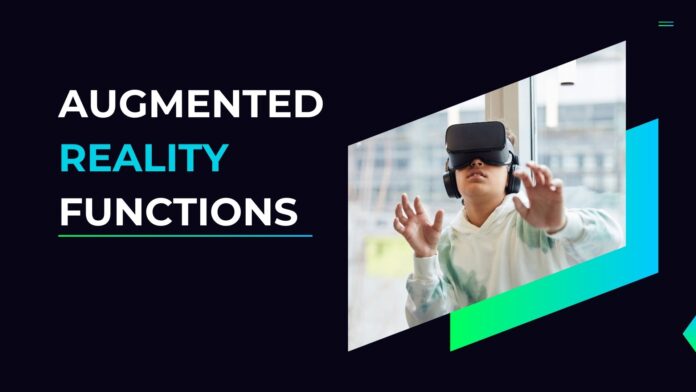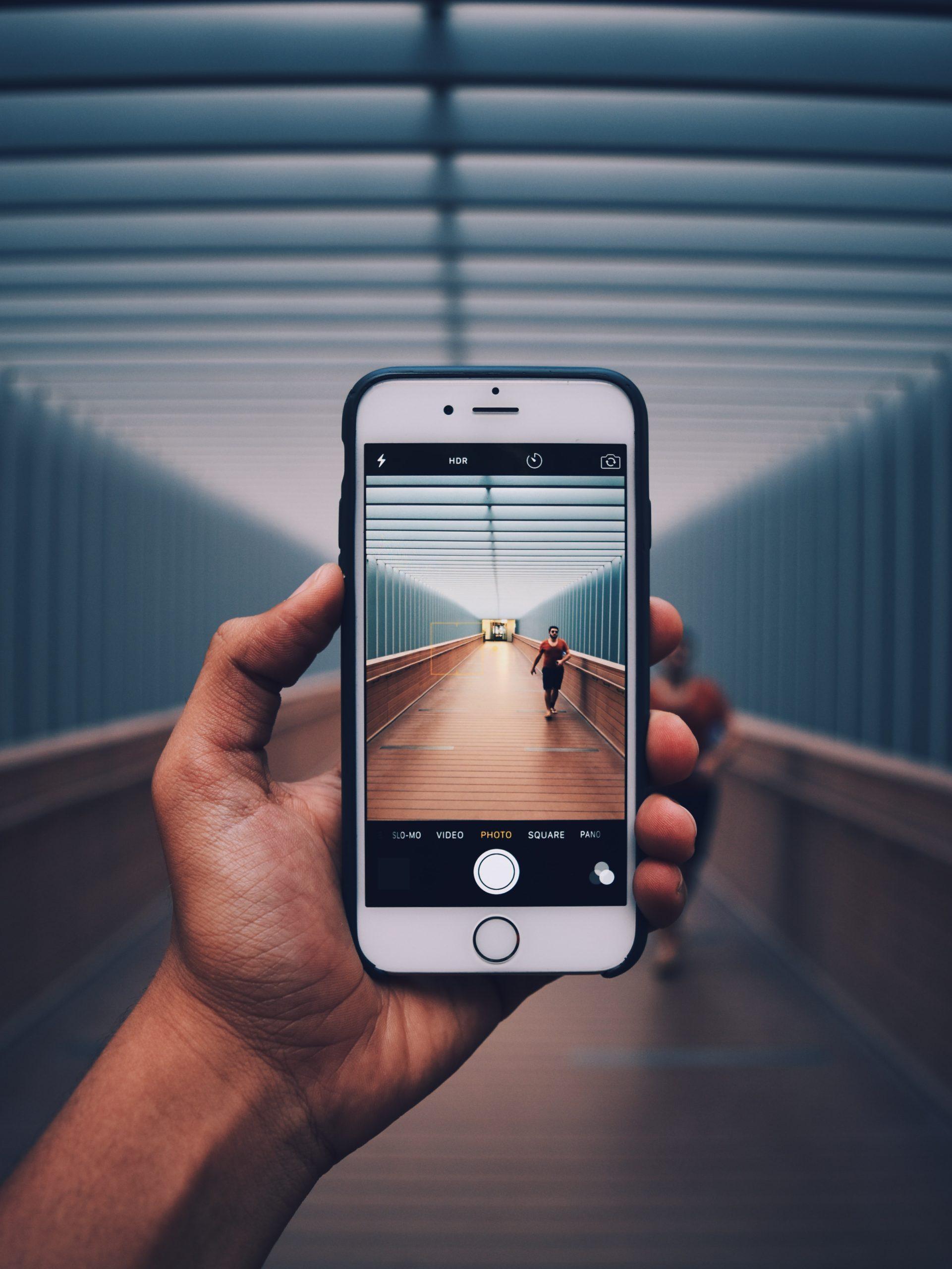Unveiling the Layers: A Comprehensive Exploration of Augmented Reality Functions
Augmented reality (AR) has transcended the realm of science fiction, transforming into a powerful technology shaping our world. By seamlessly blending the physical and digital landscapes, AR unlocks a spectrum of functions that redefine how we interact with information, complete tasks, and experience the environment around us. This article delves into the captivating world of AR functions, exploring their potential across various industries and aspects of our lives.
Unveiling the Core Functions of Augmented Reality
AR’s magic lies in its ability to overlay computer-generated content onto the real world. This overlay can encompass various elements, including:
- Visuals: 3D models, animations, text, and other graphical elements enhance the user’s perception of the physical environment.
- Audio: Soundscapes, music, and voice instructions provide additional information and create a more immersive experience.
- Haptics: Vibrations and other tactile feedback can add a layer of physical interaction with virtual objects.
Here’s a closer look at the fundamental functions that power the diverse applications of AR:
- Object Recognition and Tracking: AR systems can identify and track real-world objects in a user’s field of view. This allows for the precise placement of virtual content onto physical objects, creating a sense of interaction. Imagine pointing your smartphone camera at a piece of furniture and seeing it come alive with detailed assembly instructions.
- Real-time Interaction: AR facilitates real-time interaction with virtual objects. Users can manipulate, rotate, and explore these virtual elements within the context of the real world. This empowers architects to visualize building designs in a client’s space or allows surgeons to rehearse complex procedures on 3D models of a patient’s anatomy.
- Spatial Mapping and Anchoring: AR systems can map a user’s environment, generating a digital representation of the physical space. This allows for the anchoring of virtual objects at specific locations within the real world. Think about placing virtual furniture in your living room to see how it looks before making a purchase.
Exploration of Augmented Reality Functions
Revolutionizing Industries: AR Functions in Action
AR’s versatility extends across various industries, transforming how we work, learn, and interact with the world around us. Let’s explore some compelling examples:
A. Reimagining Manufacturing and Design
- Assembly and Maintenance: AR overlays can display step-by-step instructions for assembling complex machinery or guide technicians during maintenance procedures. Imagine a technician wearing AR glasses and seeing highlighted components needing repair on an aircraft engine.
- Product Visualization and Design: AR allows designers to visualize prototypes in real-world environments, enabling them to assess scale, functionality, and user interaction more effectively.
B. Transforming Education and Training
- Interactive Learning Experiences: AR can bring textbooks and lessons to life. Students can explore historical events in 3D, dissect virtual frogs in biology class, or manipulate complex molecules in chemistry simulations.
- Skill Development and Training: AR provides immersive training environments for professions like medicine, aviation, and engineering. Medical students can practice surgical procedures on virtual patients, pilots can train in realistic flight simulations, and engineers can visualize complex technical systems.
C. Enriching Retail and Shopping Experiences
- Virtual Try-on: AR allows customers to virtually try on clothes, makeup, or even glasses before buying them. This can personalize the shopping experience and reduce returns.
- Product Information and Reviews: AR can overlay product information, reviews, and comparisons onto physical objects in stores. Imagine pointing your phone at a pair of shoes and seeing reviews and size recommendations appear on your screen.
Beyond the Basics: Exploring Advanced AR Functions
As AR technology matures, we’re witnessing the emergence of even more sophisticated functions:
- Multi-user AR Experiences: Imagine collaborating on a 3D design project with colleagues in different locations, all interacting with the same virtual model in real-time. Multi-user AR experiences are paving the way for enhanced collaboration and communication.
- Spatial Computing and the Internet of Things (IoT): AR can interact with and manipulate smart devices within a user’s environment. Imagine adjusting your smart thermostat or controlling smart lights directly through an AR interface.
The Future of AR Functions: A Glimpse into the Evolving Landscape
The potential of AR functions continues to expand, promising exciting advancements in the years to come. Here are some intriguing possibilities:
- AR Cloud: A shared AR cloud could enable users to access and interact with persistent virtual objects anchored in real-world locations. Imagine navigating a city with historical landmarks coming alive through AR overlays accessible to everyone.
- AI-powered AR Experiences: Artificial intelligence (AI) can personalize AR experiences by understanding a user’s preferences and context. Imagine AR glasses displaying relevant information about a restaurant you’re walking by or
-
Continuing our exploration of augmented reality (AR) functions, we delve deeper into the technology’s potential and emerging applications.
D. Bridging the Gap Between the Physical and Digital Worlds: AR in Daily Life
- Navigation and Wayfinding: AR can project directions onto your field of view, guiding you through unfamiliar locations or highlighting points of interest. Imagine walking down a street and seeing directions to your destination superimposed on your surroundings.
- Augmented Reality Games: AR adds a new layer to gaming, blurring the lines between the physical and virtual worlds. Imagine exploring your neighborhood while battling virtual creatures or completing augmented reality quests.
- Accessibility and Assistance: AR can be a powerful tool for people with disabilities. Imagine someone with visual impairments receiving audio descriptions of their surroundings or those with physical limitations receiving step-by-step instructions for completing daily tasks.
Beyond the Screen: Hardware Considerations for AR Functions
While software drives AR functions, hardware plays a crucial role in delivering the experience. Here’s an overview of some key hardware components:
- Smartphones and Tablets: Many AR experiences are currently accessed through smartphones and tablets equipped with cameras and sensors. These devices provide a convenient and accessible entry point into the world of AR.
- AR Glasses: Dedicated AR glasses offer a more immersive experience, projecting virtual content directly onto the user’s field of view. These glasses are becoming increasingly sophisticated, boasting features like high-resolution displays, eye tracking, and hand gesture recognition.
- Head-mounted Displays (HMDs): HMDs provide a fully immersive AR experience, completely blocking out the user’s real-world surroundings. These are often used in professional applications like engineering design or medical simulations.
Ethical Considerations and Potential Challenges of AR Functions
As with any powerful technology, AR comes with its own set of ethical considerations and potential challenges:
- Privacy Concerns: AR applications that collect user data or track their movements raise privacy concerns. It’s crucial to ensure responsible data collection practices and user control over their information.
- Distraction and Safety: AR experiences that overlay information onto the real world can be distracting. It’s important to design AR applications that prioritize user safety and minimize distractions, especially in situations like driving or walking in public.
- Digital Divide: Access to AR technology could exacerbate the digital divide if certain demographics lack the resources to acquire AR hardware. Efforts towards affordability and accessibility are essential for inclusive participation in the AR revolution.
Conclusion
Augmented reality functions are rapidly transforming the way we interact with information, complete tasks, and experience the world around us. From revolutionizing industries to enriching daily life, AR holds immense potential. As the technology continues to evolve, addressing ethical considerations and ensuring equitable access will be crucial for shaping a responsible and inclusive future powered by AR.
Read More: crystalxone






